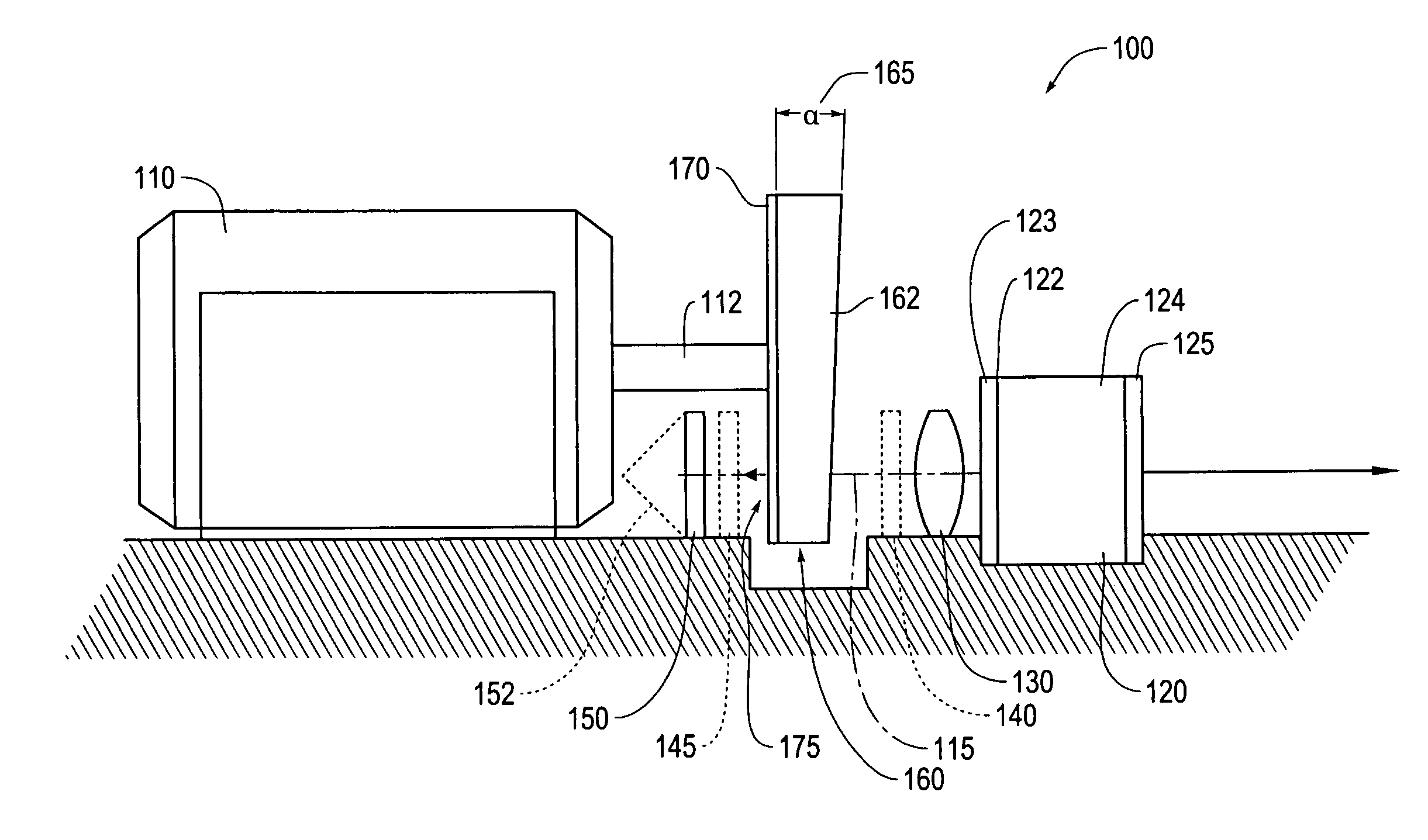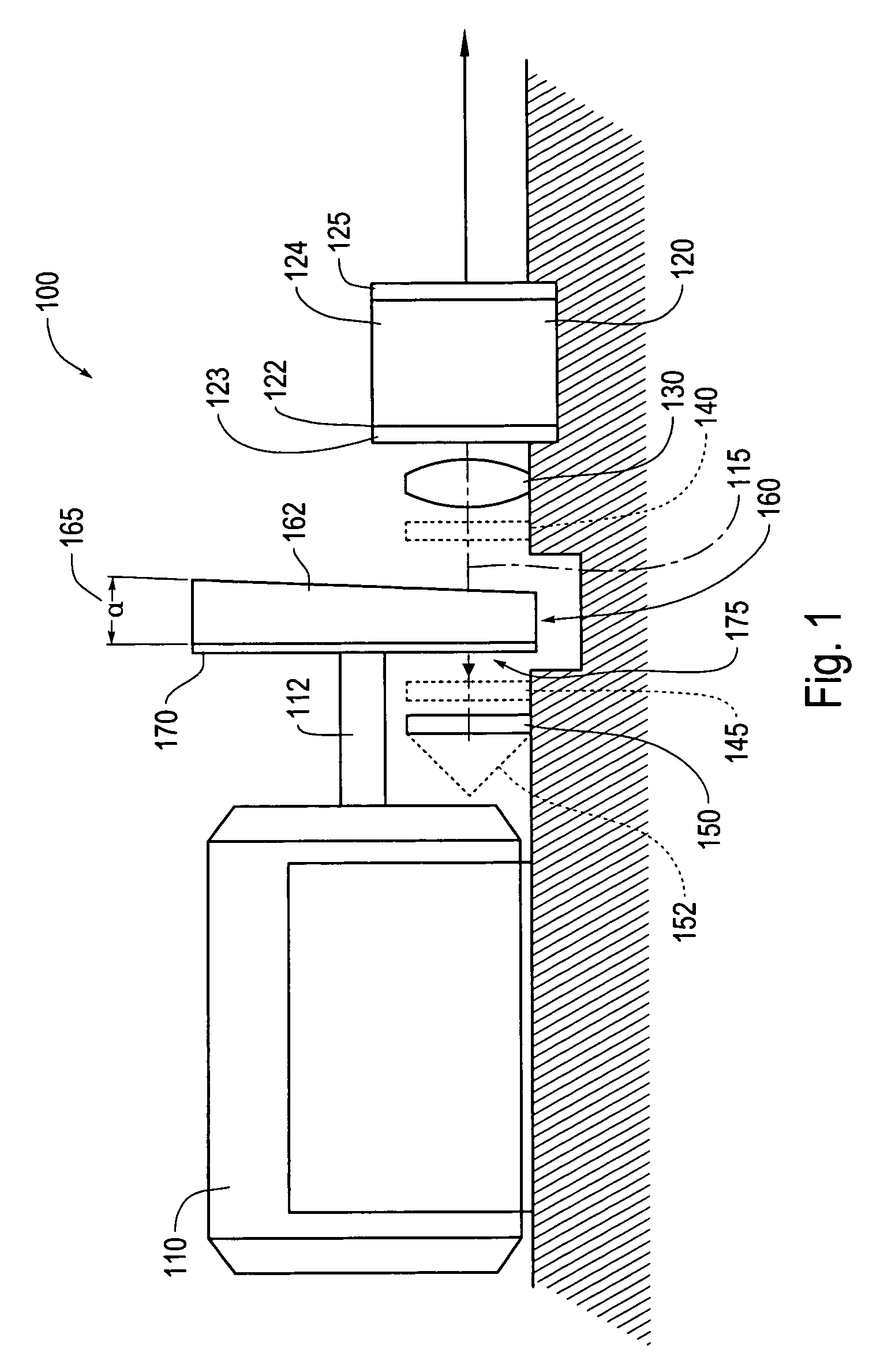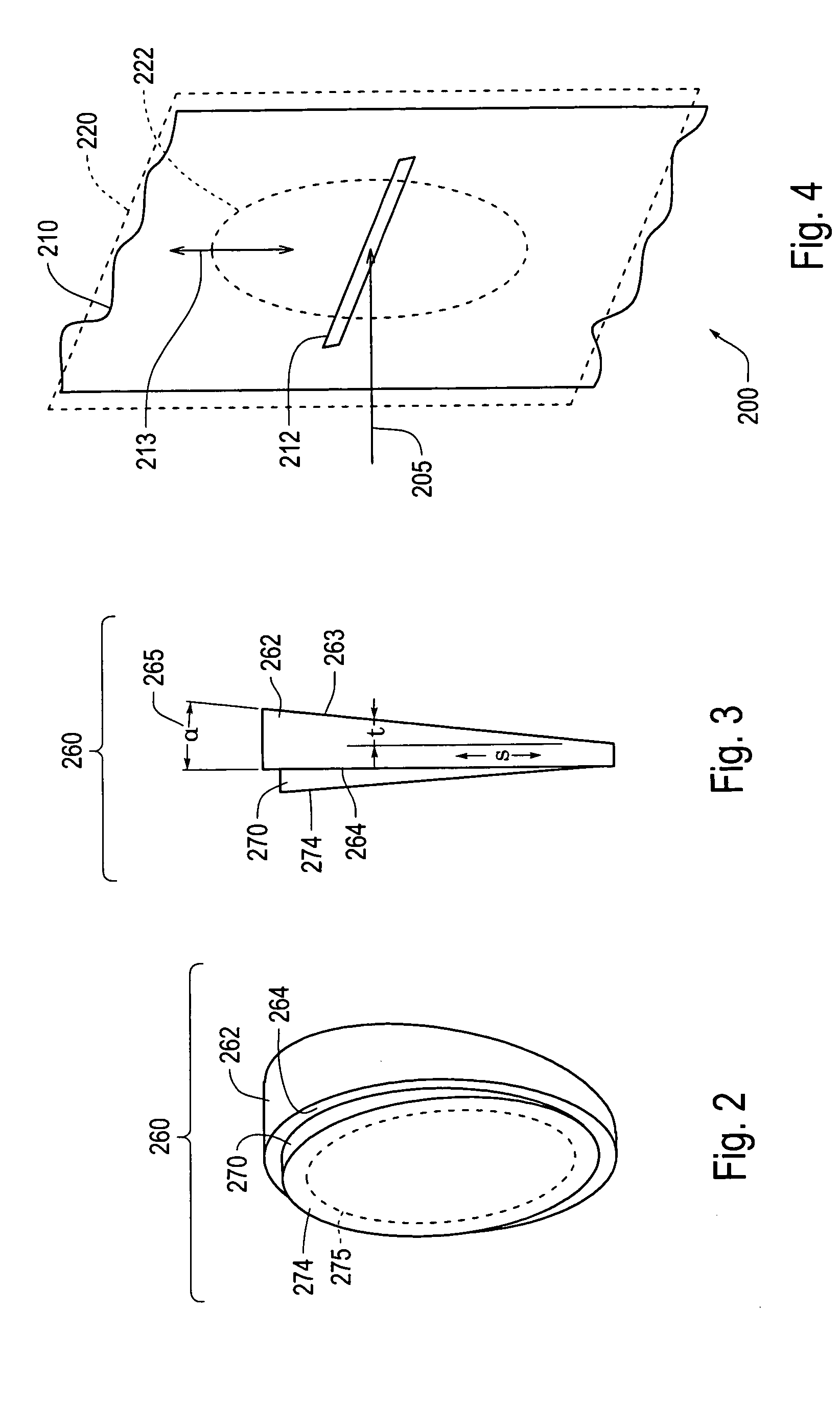External cavity laser with rotary tuning element
a technology of tuning element and external cavity, which is applied in the direction of laser details, laser optical resonator construction, optical resonator shape and construction, etc., can solve the problems of inability to meet the requirements of the required properties of the disclosed interference filter may require fabrication that is too precise and/or expensive for various applications, and the required external cavity length that is compatible with practically achievable filters may be too short for including various desirable and economic optical components, etc. the effect of increasing
- Summary
- Abstract
- Description
- Claims
- Application Information
AI Technical Summary
Benefits of technology
Problems solved by technology
Method used
Image
Examples
Embodiment Construction
[0044]It should be understood that the optical devices illustrated herein are not necessarily to scale, either in their various dimensions or in their angular relationships. It will be well within the ability of those skilled in the art, with the aid of the following detailed description of various exemplary embodiments, to select dimensions and angular relationships for such devices that are suitable for a particular embodiment or application.
[0045]In contrast to previously known laser devices, such as Fabry-Perot lasers, in various exemplary embodiments of systems and devices disclosed herein, a thin film Fabry-Perot interference filter with a variable transmission wavelength is incorporated on a transmission substrate of variable thickness, where the interference filter and transparent substrate are rotated in an external cavity to sweep the emission wavelength or band of the external cavity laser within a narrow spectral region. The variable thickness substrate, or compensation ...
PUM
 Login to View More
Login to View More Abstract
Description
Claims
Application Information
 Login to View More
Login to View More - R&D
- Intellectual Property
- Life Sciences
- Materials
- Tech Scout
- Unparalleled Data Quality
- Higher Quality Content
- 60% Fewer Hallucinations
Browse by: Latest US Patents, China's latest patents, Technical Efficacy Thesaurus, Application Domain, Technology Topic, Popular Technical Reports.
© 2025 PatSnap. All rights reserved.Legal|Privacy policy|Modern Slavery Act Transparency Statement|Sitemap|About US| Contact US: help@patsnap.com



